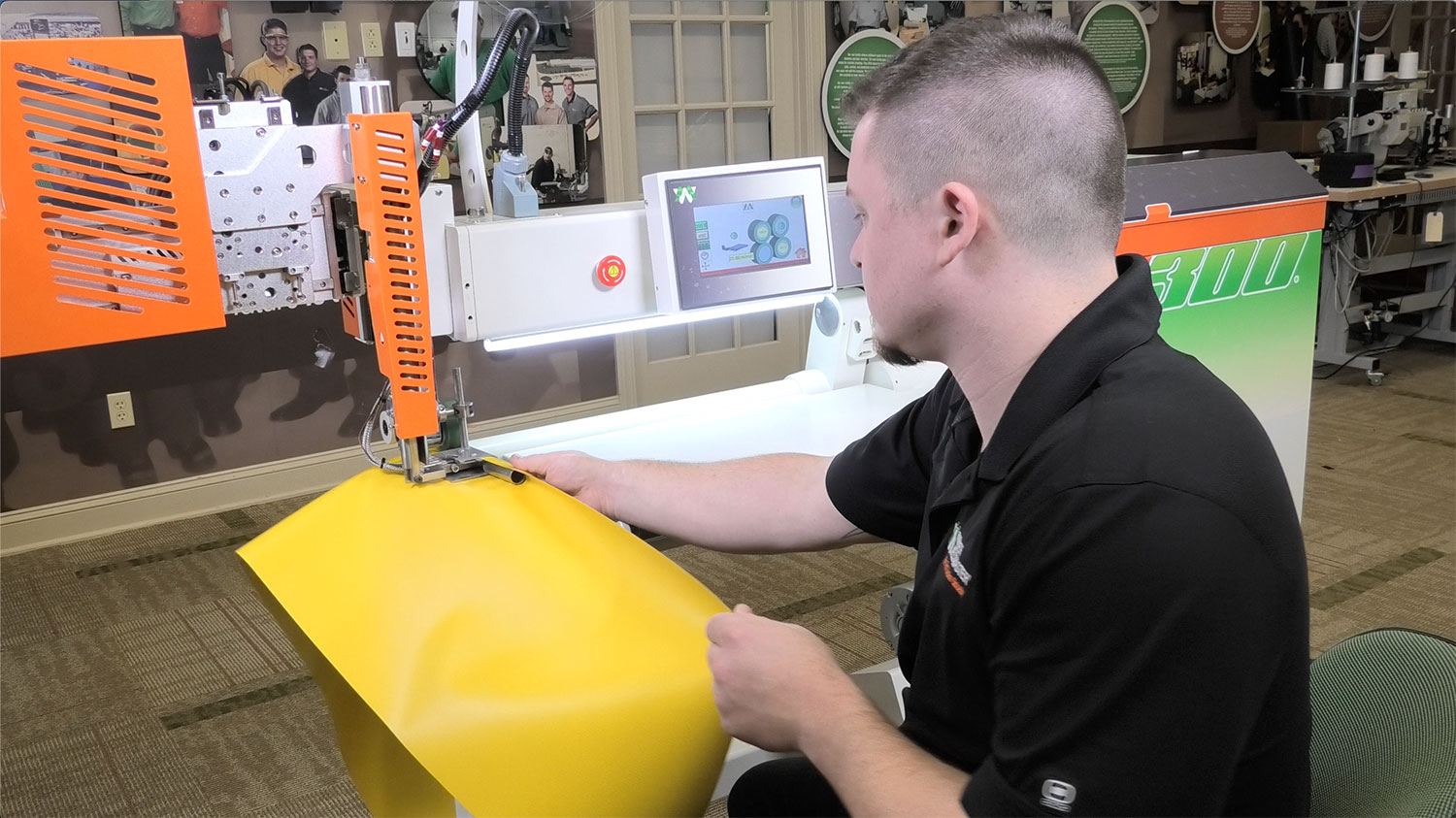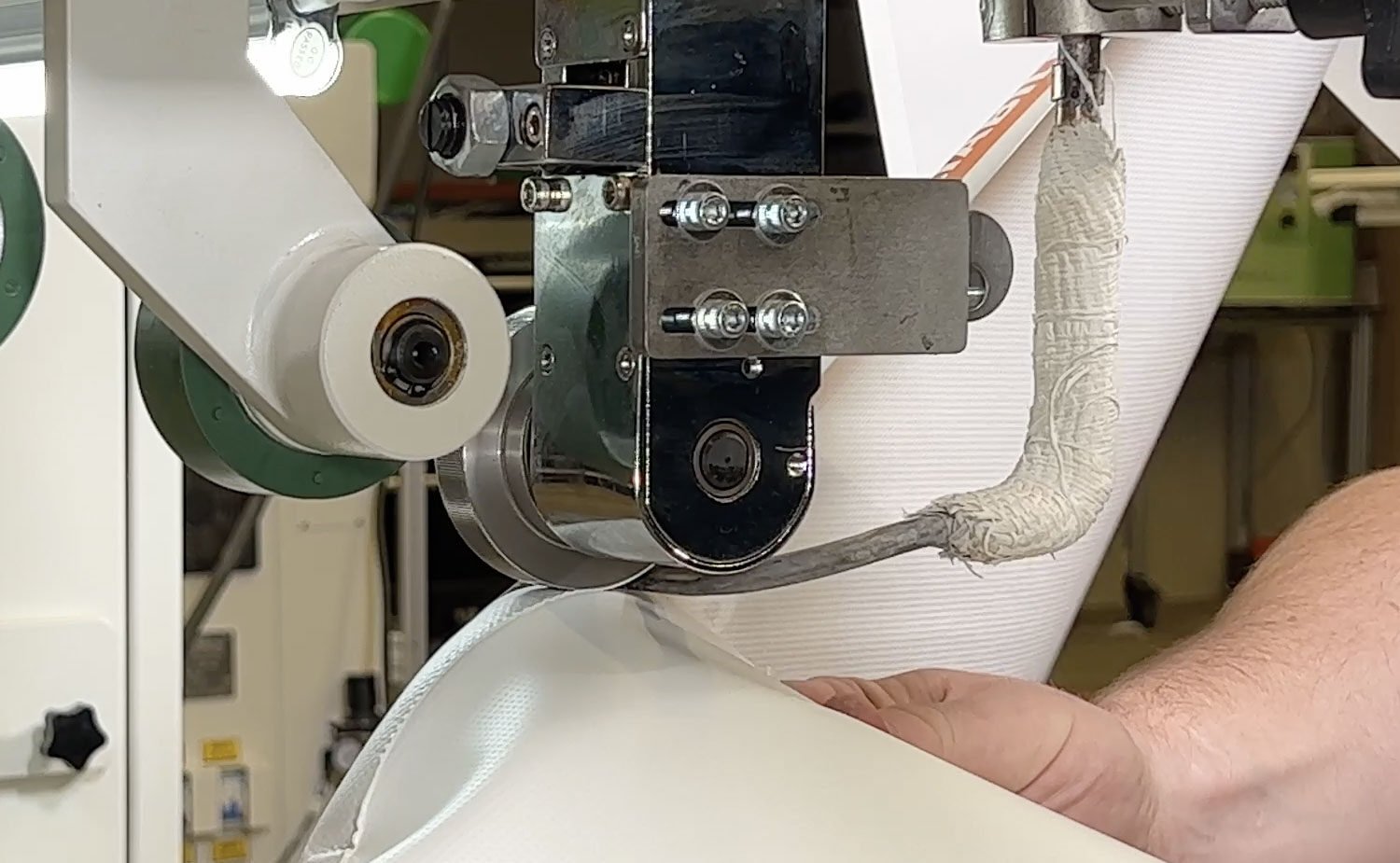Understanding PVC Welding: What It Is & Why It Matters
PVC welding involves the joining of two or more pieces of PVC (polyvinyl chloride), a widely used plastic, through various techniques that melt and fuse the material together under heat, speed and pressure. This process, often referred to as a chemical weld, involves solvent welding rather than traditional gluing. It is fundamental in industries like construction, shelter, and healthcare due to PVC’s durability, cost-effectiveness, and flexibility. Achieving perfect PVC welds is critical for ensuring the structural integrity and longevity of the products, as poor welds can lead to failures, resulting in safety risks and increased costs.
The Science Behind PVC Welding & Strong Seams
Welding PVC creates a seamless bond by utilizing a combination of heat and pressure, a process that requires precise control to ensure effective and durable joins. Temperature and pressure must be carefully managed to avoid degrading the material’s integrity, ensuring that the weld is as strong as—or stronger than—the original material. Additionally, it is crucial to wait for the appropriate cure time after assembling joints to ensure the strength and integrity of the bond.
Choosing the Right PVC Welding Materials & Equipment
Selecting appropriate materials and welding equipment is crucial. The diameter of the pipe influences the selection of the solvent cement, as larger pipes require a thicker viscosity cement for effective bonding. Not all PVC is the same; different blends react differently under heat. The equipment used—be it hot air welders, wedge welders, or radio frequency (RF) welders—should match the specific requirements of the project for optimal results.
Step-by-Step Guide to Achieving Perfect PVC Welds
Achieving consistent, high-quality PVC welds involves several key steps from preparation to the actual welding process. Here’s a detailed guide:
How to Prepare PVC for Welding: Cleaning & Setup
Proper preparation of PVC surfaces is essential. Clean, dry, and smooth surfaces are crucial for a strong bond, and ensuring a correct fit between the pipe and fitting is vital for creating strong, leak-free joints. Any contaminants like dirt or grease can prevent proper adhesion and lead to weak welds. Aligning and securing the materials properly ensures that they do not shift during the welding process, maintaining uniformity and strength across the seam.
Mastering Temperature & Speed for Stronger Welds
The welding temperature must be precisely controlled to suit the type of PVC being welded. Too high a temperature can burn the material, while too low a temperature might not melt it sufficiently to form a strong bond. The speed of the welding process also affects the seam strength and appearance. Optimal adjustments of airflow and pressure settings are crucial for achieving the best results. Additionally, marking the maximum depth for proper alignment and secure fitting during installation is essential to prevent confusion in the process.
Preventing & Fixing Weak or Inconsistent Welds
Understanding the common welding mistakes such as overheating, improper speed, and insufficient pressure can help in avoiding them. Ensuring that the joint is clean, properly aligned, and securely bonded is crucial to prevent leaks. Regular checks for any signs of poor welds such as gaps, burns, or uneven seams are vital. Techniques to reinforce and test the strength of the welds can ensure long-lasting durability.
Common PVC Welding Problems & How to Solve Them
Why Your PVC Welds Are Failing (And How to Fix Them)
Identifying and addressing common issues like incorrect temperature settings, improper material alignment, or contamination can drastically reduce the incidence of weld failures. Proper pipe preparation and avoiding common mistakes are crucial for a strong solvent weld. Solutions may involve adjusting the welder settings, improving the material handling processes, or redesigning the welding procedure.
Avoiding Material Distortion & Overheating
Excessive heat can cause PVC to deform, which not only affects the appearance but can also weaken the material structurally. To ensure a proper bond, it is crucial to rough up the surfaces with sand paper until they appear dull rather than shiny. Learning how to modulate the heat application based on the material thickness and type can prevent damage and maintain the integrity of the PVC. Utilizing tools like Miller Weldmaster’s weld test and seam vision systems can help in accurately finding and monitoring seams and welding temperatures, ensuring the optimal heat is applied during the welding process. This not only enhances the quality of the seams but also prevents overheating, preserving the structural and aesthetic qualities of the PVC.
Best Practices for Industrial PVC Welding Efficiency
Increasing Speed Without Compromising Weld Strength
In an industrial setting, efficiency is key. Clean, perpendicular cuts on the pipes are essential to ensure proper fitting and prevent leaks in the joints. Employing techniques that increase the speed of the welding process without affecting the quality of the welds is crucial. Advances in automation and the use of state-of-the-art welding machines can aid in achieving this balance.
Choosing the Best PVC Welding Method for Your Application
The selection of welding methods depends largely on the specific application. It is crucial to use the correct cement and priming techniques for effective bonding of PVC pipe. For instance, hot air welding is suitable for thinner sheets, while wedge welding may be preferred for thicker sections. RF welding is often used for waterproofing applications such as tarpaulins and tents.
How Miller Weldmaster Helps You Achieve Perfect PVC Welds
Miller Weldmaster, a leader in the welding industry, provides top-notch PVC welding solutions that enhance both the efficiency and quality of welds. Our machines are designed to deliver strong, consistent welds and are backed by decades of innovation and a deep understanding of the welding industry.
Miller Weldmaster’s Industry-Leading PVC Welding Machines
Our range of welding machines includes options tailored to various PVC applications, ensuring precision and durability. We offer customizable solutions that can adapt to different operational scales and needs, from small workshops to large industrial operations.
Why Choose Miller Weldmaster for Your PVC Welding Needs?
With years of industry expertise, reliable equipment, and dedicated support and training services, Miller Weldmaster is your go-to partner for achieving flawless PVC welds. Our customers' success stories reflect our commitment to excellence and innovation in welding technology.

Frequently Asked Questions About Getting Perfect PVC Welds
What is the best temperature for welding PVC?
The optimal temperature varies depending on the type of PVC but generally ranges between 350°F to 450°F.
Using the correct solvent is crucial for creating effective welds in PVC installations, ensuring strong, leak-free connections.
Why are my PVC welds weak or peeling apart?
This could be due to improper temperature, speed, or pressure settings during the welding process.
What type of PVC welding machine should I use?
The choice of machine depends on the specific requirements of your project and the thickness of the PVC material.
How can I test if my PVC welds are strong enough?
Various testing methods, including tension and peel tests, can be used to evaluate the strength of PVC welds.
Can I weld PVC without a machine?
Manual techniques are available but might not provide the same strength and durability as machine welding.
How do I avoid burning or melting PVC during welding?
Careful control of temperature and speed is essential to prevent thermal damage.
How does automation improve PVC welding results?
Automation ensures consistent, repeatable processes that enhance both the quality and speed of welding operations.
By understanding the principles, best practices, and potential pitfalls of PVC welding, you can achieve perfect welds that are strong, durable, and aesthetically pleasing, ensuring the longevity and functionality of your PVC-based products.




